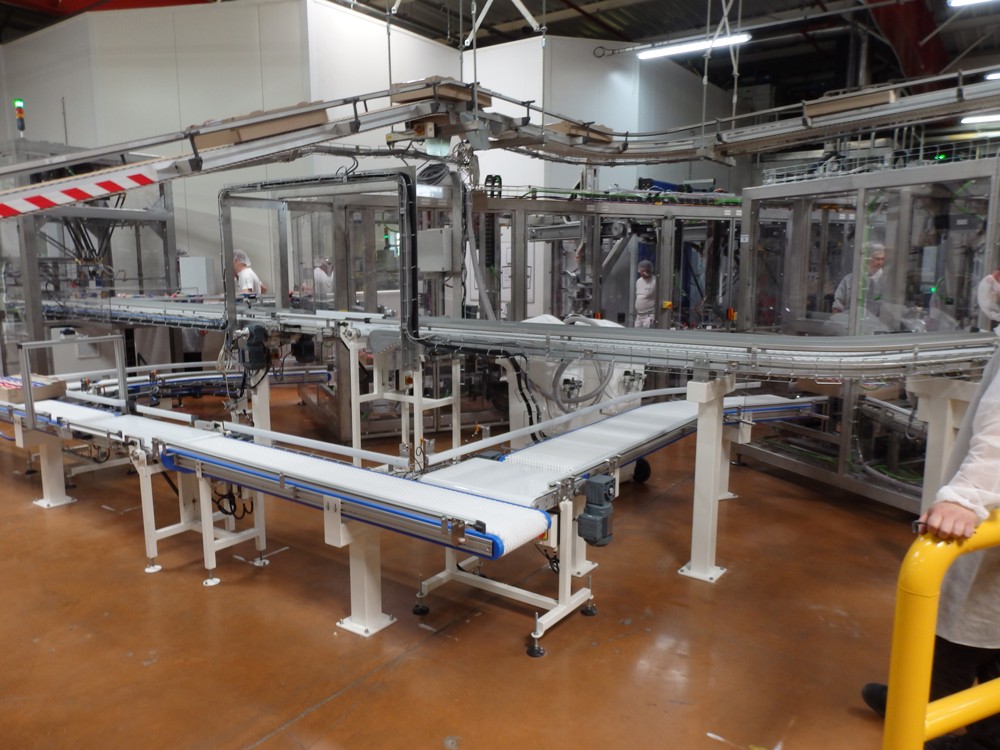Eco-Friendly Practices: Driving Change with Bulk Container Recycling
Eco-Friendly Practices: Driving Change with Bulk Container Recycling
Blog Article
Effective Industrial Recycling Solutions for Sustainable Packaging: A Comprehensive Guide
In today's progressively environmentally-conscious world, the need for sustainable packaging remedies has actually never been greater. To satisfy this demand, businesses across sectors are proactively looking for efficient commercial recycling solutions. Nevertheless, navigating the facility landscape of lasting packaging can be challenging without a comprehensive overview. That's where this comprehensive guide on reliable industrial recycling services for sustainable packaging can be found in. By checking out crucial locations such as product packaging product option, designing for recyclability, carrying out reusing framework, working together with reusing partners, and tracking and measuring recycling success, this guide will certainly equip you with the knowledge and tools necessary to make informed choices and drive positive modification within your company. Whether you're a product packaging specialist, sustainability supervisor, or just curious about the subject, this overview will certainly supply beneficial understandings and techniques to help you browse the globe of sustainable product packaging.
Product Packaging Material Option
The selection of packaging materials plays a crucial role in making sure the sustainability of commercial recycling solutions. The choice of materials is essential in reducing ecological effect and making the most of reusing effectiveness when it comes to lasting product packaging. Picking the ideal materials can assist minimize waste generation, preserve resources, and promote a circular economic climate.
Products like cardboard, paper, glass, and certain types of plastics can be recycled several times without shedding their top quality. On the various other hand, products that are difficult to reuse, such as non-recyclable compounds or blended plastics, can create difficulties for the reusing procedure and may end up in burners or land fills.
One more consideration is making use of biodegradable and eco-friendly products. Product packaging made from eco-friendly resources, such as plant-based plastics or biopolymers, can assist minimize reliance on fossil gas and mitigate environment change. Furthermore, eco-friendly products break down naturally with time, lowering the build-up of waste in landfills.
In addition, the weight and volume of product packaging products need to be reduced to decrease transportation costs and energy usage. Light-weight materials not only need fewer sources during production but likewise add to decrease carbon discharges during transportation.
Creating for Recyclability
Packaging developers need to prioritize the use of materials that are commonly accepted for recycling and have actually established recycling infrastructures. Materials such as glass, light weight aluminum, and particular types of plastic, like Animal and HDPE, are typically recycled and should be favored over materials that are expensive or tough to reuse.
An additional critical factor to consider in making for recyclability is the removal of unneeded components or products. By lessening the variety of layers, coverings, and extra components, product packaging can be made simpler and much easier to recycle. In addition, designers should aim to decrease the usage of mixed materials, as they can complicate the reusing process.

Implementing Recycling Infrastructure
Effective execution of reusing infrastructure is essential for the success of commercial recycling solutions. Without correct framework in position, the recycling process comes to be ineffective and ineffective, impeding the total goal of sustainable product packaging.
To implement reusing framework properly, a number of vital aspects require to be thought about. There must be a well-organized collection system that helps with the separation and collection of recyclable products. This can consist of marked reusing containers in public spaces, along with collaborations with waste management firms for curbside pickup and sorting.
Once accumulated, the recyclable products require to be transferred to recycling facilities in a prompt fashion. This needs effective logistics and transport networks, making certain that the products reach the suitable centers without useful link hold-up.
At the reusing facilities, progressed sorting and processing modern technologies should be in location to separate various kinds of products properly. This includes making use of automated arranging makers, optical scanners, and hand-operated sorting techniques.
In addition, there need to be a robust market need for recycled materials. This can be achieved through cooperations with makers and markets that make use of recycled products in their manufacturing procedures. Creating a secure market for recycled products incentivizes the recycling industry and promotes the round economic situation.
Teaming Up With Recycling Allies

One trick aspect of collaborating with reusing companions is the facility of clear communication networks. It is necessary to develop open lines of communication to help with the exchange of info, updates, and comments. This allows both celebrations to remain notified about the progress of reusing campaigns and attend to any kind of difficulties or concerns that might develop.
Additionally, cooperation can view involve collaborations in carrying out and making reusing programs. Reusing companions can offer valuable insights and support in establishing reliable collection systems and determining the most ideal recycling modern technologies. By functioning with each other, organizations and reusing companions can enhance the reusing procedure and decrease waste.
In addition, partnership can prolong past the functional elements of recycling. It can likewise incorporate campaigning for and education and learning initiatives. By signing up with forces, businesses and recycling partners can raise recognition regarding the significance of recycling and advertise the adoption of lasting product packaging practices amongst consumers and other stakeholders.
Tracking and Measuring Recycling Success
To make certain the performance of commercial reusing options and the accomplishment of sustainable product packaging goals, it is important for companies and their recycling companions to develop an extensive system for monitoring and determining reusing success (processing company). Measuring and tracking reusing success permits businesses to evaluate the influence of their reusing initiatives, determine locations for improvement, and set significant targets for future development
One way to track recycling success is via making use of data collection and evaluation tools. By collecting information on the amount of product packaging waste generated, the percent of waste that is reused, and the kinds of materials being reused, businesses can obtain beneficial understandings into their recycling efficiency. This data can after that be assessed to determine fads, patterns, and areas of inefficiency.
One more important aspect of monitoring and gauging recycling success is establishing standard and clear metrics. This allows services to compare their performance against market criteria and track their progression gradually. Metrics such as recycling rates, waste diversion prices, and greenhouse gas discharges can supply a measurable step of a service's reusing success.

Conclusion
In final thought, carrying out reliable industrial recycling options for lasting product packaging requires mindful consideration of product packaging material selection, developing for recyclability, applying reusing facilities, working together with recycling partners, and monitoring and determining recycling success. By integrating these practices, companies can add to a much more environmentally-friendly and sustainable method to product packaging, minimizing waste and advertising the circular economic climate.
By checking out vital locations such as packaging product selection, making for recyclability, implementing reusing framework, teaming up with recycling partners, and monitoring and determining reusing success, this overview will equip you with the knowledge and devices required to make informed choices and drive positive adjustment within your company. Packaging developers should prioritize the use of products that are extensively accepted for reusing and have developed recycling facilities.Partnership with recycling partners is important for the successful implementation of commercial recycling services and the achievement of sustainable packaging goals. By signing up with forces, services and recycling partners can elevate awareness about the importance of reusing and promote the fostering of sustainable product packaging click resources techniques amongst customers and various other stakeholders.
By collecting data on the quantity of product packaging waste generated, the portion of waste that is recycled, and the types of materials being reused, services can gain useful insights into their reusing performance.
Report this page